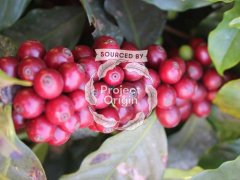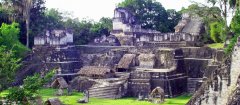Talk about the main coffee producing areas in Honduras, the current situation of coffee and the ways to improve it.

For professional baristas, please follow the coffee workshop (Wechat official account cafe_style)
Honduras (Honduras)
Well-known representative coffee: Honduras
Honduran coffee seems strange to many coffee drinkers. For coffee production, the geographical conditions of Honduras are no less than those of its neighboring coffee-producing countries such as Guatemala and Nicaragua. However, in the past, Honduras was less well-known in the consumer market because it did not have strong support in the handling and transportation of raw beans. However, in recent years, the state of Honduras has begun to change dramatically, and the emphasis on the coffee industry has slowly opened up the international popularity of Honduran coffee. There are six main coffee producing areas in Honduras, including Santa Barbara, Copan,Ocotepeque, Lempira, La Paz and El Paraiso in the southeast, which are adjacent to each other in the west. Honduran coffee tastes less acidic, while caramel is more sweet. The taste of coffee from these five different producing areas is also slightly different, some slightly sour, some have a unique flavor. Its quality is not bad at present, but because it is still promoting its popularity, the price of coffee in Honduras is actually quite competitive. Because of its flavor characteristics, it is a good choice to make a single product or add comprehensive coffee, or even one of the beans with Espresso ingredients.
Talk about Honduran coffee!
Honduras has all the environmental factors for producing good coffee: fertile soil, sufficient planting height, excellent microclimate! Just as the western meaning of Honduras is "depth", there are really many high mountains and deep valleys in this country, and coffee is grown in the beautiful conditions of these mountains!
However, the export port of this country is very disadvantageous to the preservation of coffee. The weather is so hot all the year round that raw beans turn white in less than half a month.
Although coffee is now produced in 15 of the country's 18 provinces, and planting is quite common, if the port warehousing problem is not solved, the coffee problem in Honduras will exist.
Let's take a look at the coffee producing areas of Honduras:
[main producing areas of Honduras]
61 per cent of Honduras coffee produces mountains between 900m and 1200 meters above sea level, while mountains ranging from 1200 to 1600 meters account for 23 per cent of the production area. In fact, just like neighboring Guatemala and El Salvador, Honduras actually produces a lot of high-quality high-altitude beans!
There are eight major boutique coffee producing areas in Honduras (the definition of Honduran Icafe has changed recently, but there are many versions, as illustrated by the following examples):
(1) San Marcos San Marcos de Colon in Choluteca, (2) La Tigra in Francisco Morazan, (3) Makala Marcala in La Paz, (4) Los Alpes in Siguatepeque, (5) Santa Barbara Santa Barbara, (6) Intibuca, (7) Koban Copan (8) Ocotepeque.
In 2002, I went to Shanbu San Pedro Sula to attend a coffee export party with Koban Coban, and I really saw good Honduran coffee! In 2006, as a CoE judge in the State of Honduras, I really saw the good coffee in the country. . In Koban and La Paz, Makala Marcala from La Paz in the 2004 National Cup Test Competition in Honduras, 3 of the top 10 are manors from the district! In 2006, Pacamaro, a unique variety from Yoro, won the championship! The following is a description of Honduran coffee varieties:
[common coffee species in Honduras]
The varieties of coffee grown in China and the United States are roughly the same, but countries will also develop their own hybrids for planting research. here are some common coffee varieties in Honduras:
Typica ladder card species-commonly used locally, ar á bigo or criollo, to call typica this species. Typica is highly cultivated and widely grown in the country, up to 12 feet tall. Typica coffee with branches usually at an angle of 60 degrees to the trunk is very good and is widely loved by buyers.
Borbon bourbon species-widely cultivated in high-altitude mountain areas. The branch is at an angle of 45 degrees from the trunk. The newly sprouted coffee leaves are light green. Bourbon species can also be regarded as higher species, which often need pruning and care at the initial stage of planting. At the same time, the planting range of a single plant is larger!
Caturra Katula-native to Brazil, is a variety of bourbon. Katula is a short and dense kind of coffee, which is easy to harvest and take care of. The branch and the trunk also show a 45-degree angle. The leaves are round and shiny! The shape of the fruit is similar to that of bourbon, but the yield per plant is higher, the harvest time is later, and the trunk is more resistant to the wind!
Catuai katay species-also from Brazil. It's a hybrid of Mundo Novo and Caturra. Katai is also a dwarf but taller than Caturra. The branching angle is the same as the leaf shape and Caturra, only the color is lighter.
Maracatu Malakha, a hybrid of Maragogype and Caturra, has a larger bean shape.
Like Central American countries, the harvest of Honduran beans is concentrated from November to February of the following year. After understanding the coffee producing areas, varieties and grades, let's look back at the current situation of coffee in Honduras.
[current status of coffee in Honduras]
According to the Honduran Coffee Agency (IHCAFE), producers have increased their acreage because of the rise in international soybean prices, which are mainly due to two factors:
(1) it coincides with the coffee cycle every two years (Honduras's unique bi-annual cycle of coffee production has a high yield in one year and a low yield in the second year). Production is just as high as the previous year.
(2) the price rises, so that coffee farmers are willing to pay more painstaking efforts to take care of coffee trees and fertilize or even improve fertilization techniques, and pest control techniques!
However, due to the stimulation of prices, farmers are already willing to spend money on seeds and pest prevention.
After two visits to Honduras and referring to relevant materials, we found the following conditions:
The main results are as follows: (1) the basic transportation and storage facilities still need to be improved. Due to the lack of better treatment plant, transportation and storage, a good evaluation of Honduras beans is still lacking.
(2) the treatment of coffee cherries has been improved after harvest, thanks to IHCAFE's coffee promotion and education! But lack of money and resources, as well as farmers who have not joined the IHCAFE, are still extremely short of resources.
(4) as can be seen from the trade data of Honduras, coffee is still sold to Guatemala and El Salvador, and many high-quality beans can be exported to Guatemala as high-grade beans (for details, see USDA Foreign Agricultural Service Date: 5ax 25max 2004)
Some exporters want to get cash quickly or make a difference, and the futures market price of neighboring Guatemala is much higher than that of Honduras. These factors cause Honduran coffee beans to be sold to neighboring countries every year. So there are many examples of beans from Copan Copan and Santa Barbara being smuggled into Guatemala to pretend to sell melon beans!
In the southern province of La Paz, when the border with El Salvador was not closed, many beans were shipped to the country. This is one of the reasons why Honduran coffee is considered to have no boutique beans and can only be used as a mild blend.
[methods of improvement]
(1) the loan is guaranteed by the Honduran Coffee Agency (IHCAFE). The borrower has to pay US $4 per bag (46kg), so it can curb the rise of bad debts and prevent producers from viciously cutting prices to sell coffee cherries or raw beans!
(2) IHCAFE, which will introduce new agricultural models to increase the value of coffee farms, is developing plans to help coffee producers make their farms produce food, fish, poultry, bees or fruits. This will make farmers self-sufficient, which will mean that producers do not need to buy those products and can generate some other income.
(3) promote boutique coffee, hold national coffee competitions, explore excellent manors, and hold various marketing activities at home and abroad: Cup of Excellence of Honduras has indeed made Honduras a boutique manor. In fact, this is also what coffee glutton would like to see! However, compared with the Central American countries, ICAFE and the Honduran authorities, there is still a lot of room for progress.
Important Notice :
前街咖啡 FrontStreet Coffee has moved to new addredd:
FrontStreet Coffee Address: 315,Donghua East Road,GuangZhou
Tel:020 38364473
- Prev

Honduran Coffee Industry and History introduction to the most popular Honduran Coffee in Europe
Exchange of professional baristas follow the coffee workshop (Wechat official account cafe_style) Organic coffee in the drying of the Honduran coffee industry, taken in San Juan Ciudo, Honduras. The coffee industry is an important part of the economy and history of Honduras. Since 2011, Honduras has topped Central America in coffee production, replacing the perennial dominance of neighboring Guatemala.
- Next

Is the coffee famous in Honduras? quality and price of coffee in Honduras
For the exchange of professional baristas, please follow the coffee workshop (Wechat official account cafe_style) Honduras is located in Central America, Guatemala to the west, El Salvador to the southwest, Nicaragua to the southeast, the Caribbean to the east and north, and the Gulf of Honsaiga in the Pacific to the south. There are 280000 hectares of coffee gardens in the territory, mainly small coffee merchants, and most of the coffee gardens
Related
- Does Rose Summer choose Blue, Green or Red? Detailed explanation of Rose Summer Coffee plots and Classification in Panamanian Jade Manor
- What is the difference between the origin, producing area, processing plant, cooperative and manor of coffee beans?
- How fine does the espresso powder fit? how to grind the espresso?
- Sca coffee roasting degree color card coffee roasting degree 8 roasting color values what do you mean?
- The practice of lattes: how to make lattes at home
- Introduction to Indonesian Fine Coffee beans-- Java Coffee producing area of Indonesian Arabica Coffee
- How much will the flavor of light and medium roasted rose summer be expressed? What baking level is rose summer suitable for?
- Introduction to the characteristics of washing, sun-drying or wet-planing coffee commonly used in Mantenin, Indonesia
- Price characteristics of Arabica Coffee Bean Starbucks introduction to Manning Coffee Bean Taste producing area Variety Manor
- What is the authentic Yega flavor? What are the flavor characteristics of the really excellent Yejasuffi coffee beans?

